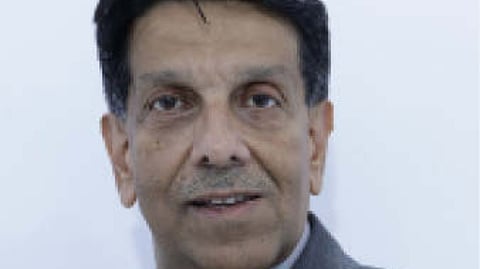‘Expecting modest positive growth this year’
During the last financial year, India's engineering exports reached a record $116 billion. Given the ongoing geopolitical uncertainties, how would you evaluate this achievement?
Undoubtedly, this is a good performance. But I would like to look at it from another prism too, Till January, our growth was 10 per cent. But, in February and March, the numbers fell, which is why we had to rest at $116 billion and could not reach close to $118 billion we were expecting late last year. So, while we batted well all through the innings, we somehow lost the momentum in the slog overs. The uncertainties prevailing in the international markets including the US and the wars, which are taking place all around, contributed to this slowdown in the concluding months of the previous fiscal. But even as those events affected some part of the growth, the story is still there. And that’s a big plus. Our previous best was $112 billion, which we crossed in 2024-25. Now, we are targeting
$120 billion of engineering exports this year.
So, are you confident of a modest growth this year, though the international situation seems to be deteriorating?
As an industry body, we are still looking at a positive growth trajectory. For Engineering Exports Promotion Council (EEPC), the target is to touch $250 billion by 2030. We are quite confident we will reach there.
India is negotiating Free Trade Agreements (FTAs) with strategic trade partners and also Bilateral Trade Agreement (BTA) with the US. What impact will they have on engineering exports?
Our FTA with the UK has been finalised, but it will take 12 months to be effective – three months to weigh in all the nitty-gritties and nine months for the deal to pass through their cabinet and British Parliament. A trade deal does not happen in the UK till it goes through the Parliament. With the US, we hope to have some part of the deal before 9 July, ahead of the reciprocal tariff deadline expires and then have a broader deal by the end of the year. But, then, you know the Trump Administration is unpredictable and you never know what could come into the play. In the US, sectoral tariffs are now in for products on steel and aluminium – for up to $5 billion; there is 25 per cent tax and from 26 March; and there is also a similar tax on auto and auto components. In engineering, it is $2.6 billion drawing 25 per cent. And the reciprocal 10 per cent baseline tariff is there.
Ideally, what would be a favourable deal for you?
A favourable situation for us would be one: there is no reciprocal tariff. Secondly, provision of tariff-linked quota. We can’t get to zero and they do not agree to exemptions and exclusions. We are asking for tariff below the trade quota, which could be zero duty. But if we cross the quota within the stipulated period, then they can impose 25 per cent duty. That is our request.
Your second biggest market is the EU and India is negotiating an FTA with them as well. But there is a threat of carbon tax imposition. What do you have to say about this?
We are asking for a moratorium of at least three years for MSMEs. Meanwhile, the EU has already postponed the deadline for carbon tax imposition by one year – from 26 January, the date has been shifted to 27. We are hopeful of getting some periodicity-based waiver for the MSME sector.
To expand engineering exports, do you have new emerging pockets, where you could think of consolidation in the coming years?
Yes, the MENA region has shown positive trends. It is contributing 16 per cent of our business. The engineering export trade with this region has significantly gone up and I’m sure we will make further gains. The other promising pocket for us is Latin America. India is negotiating two FTAs in the region – with Chile and Peru. We are hopeful that these trade deals will help in focussing more on the region in the years to come.

